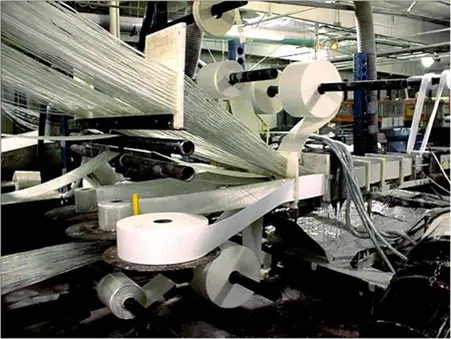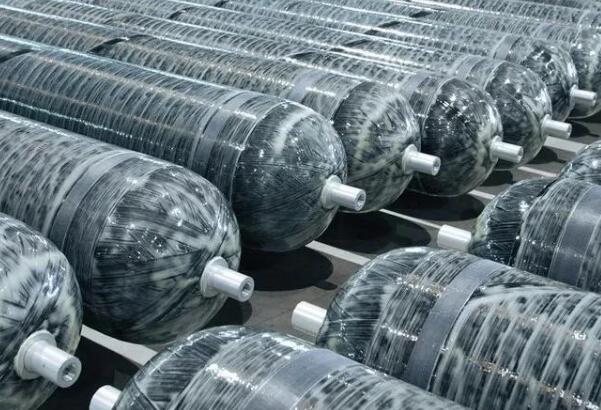Humans have been using adhesives for thousands of years, however, epoxy resin adhesives (epoxy adhesives or epoxy glue for short) have only been around for 50 years since they appeared in 1950. But with the various adhesive theory in the middle of the 20th century, as well as adhesive interface chemistry, adhesive rheology and adhesive damage mechanism and other basic research progress, so that the adhesive order performance, variety and application has been a rapid development. Epoxy resin and its curing system with its unique properties and become an important class of adhesives with excellent performance, many varieties and wide adaptability. Because of the high bonding strength and versatility of epoxy adhesives, it has been called “universal adhesive” and “vigorous adhesive”. Epoxy adhesives have been widely used in aviation, aerospace, automotive, machinery, construction, chemical, light industry, electronics, electrical appliances and daily life and other fields.
Epoxy adhesive is a liquid or solid adhesive composed of epoxy resin, curing agent, accelerator, modifier, diluent, filler and so on. The gluing process of epoxy adhesive is a complex physical and chemical process, including steps of infiltration, adhesion, curing, etc., and finally generates a three-dimensional cross-linked structure of the cured material, which combines the bonded material into an integral. Adhesive performance (strength, heat resistance, corrosion resistance, impermeability, etc.) depends not only on the structure and performance of the adhesive and the structure of the surface of the bonded object and adhesive properties, but also on the design of the joint, the preparation process and storage of the adhesive and the gluing process. In addition, it is also subject to the constraints of the surrounding environment (stress, temperature, humidity, media, etc.). Therefore, the application of epoxy adhesives is a system engineering. The performance of the epoxy adhesive must be adapted to the above factors affecting the gluing performance in order to obtain the best results. With the same formula of epoxy adhesive gluing different nature of the object, or using different gluing conditions, or in different environments, its performance will have great differences. The application should be given due attention. This article mainly introduces the epoxy adhesive formulation design, gluing process conditions, performance and application examples.
Type, characteristics and mechanism of epoxy resin adhesives:
There are many varieties of epoxy resin adhesives, and their classification methods and classification indicators have not been unified. Usually classified according to the following methods.
Classification by the form of adhesives – such as solvent-free adhesives, (organic) solvent-based adhesives, water-based adhesives (can be divided into water-emulsion and water-soluble type), paste adhesives, film adhesives (epoxy film), etc.
(1)Classification by curing conditions
1)Cold curing adhesive (not heated curing adhesive). Also divided into:
Low-temperature curing adhesive, curing temperature <15°C;
Room temperature curing adhesive, curing temperature 15-40 °C.
2)Heat-curing adhesive. Also divided into:
Medium-temperature curing adhesive, curing temperature of about 80-120 °C;
High-temperature curing adhesive, curing temperature > 150 °C.
3)Other ways to cure glue, such as light-curing glue, moist surface and water curing glue, latent curing glue, etc.
(2)Classification by adhesive strength
1)Structural adhesive not only has high shear and tensile strength, but also high uneven tearing strength. So that the glue joint in a long time can withstand vibration, fatigue and impact and other plant load. Also has high heat resistance and weather resistance. Usually shear strength is > 25MPa, tensile strength is ≥ 33MPa, and uneven tearing strength is > 40kN/m.
2)Secondary stress structural adhesive can bear medium load. Usually the shear strength is 17-25MPa, and the uneven tearing strength is 20-50kN/m.
3)Non-structural adhesive, i.e. general-purpose adhesive, with relatively high room temperature. But with the rise of temperature, the adhesive strength decreases faster, so it can only be used for the parts of the force is not large.
(3)Classification by application
1)General-purpose adhesive.
2)Special adhesive. Such as high-temperature adhesive (use temperature ≥ 150 °C), low-temperature adhesive (can be resistant to -50 °C or lower temperature), strain adhesive (strain gauges with), conductive adhesive (volume resistivity 10-3 ~ 10-4Ω-cm), sealant (vacuum sealing, mechanical sealing), optical adhesive (colorless transparent, light aging, refractive index and optical parts to match), corrosion-resistant adhesive, structural adhesive, etc..
In addition, it can also be classified by the type of curing agent, such as amine curing epoxy glue, acid anhydride curing glue, etc. It can also be divided into two-component adhesive and one-component adhesive, pure epoxy adhesive and modified epoxy adhesive (such as epoxy-nylon adhesive, epoxy-polysulfur rubber adhesive, epoxy-butyronitrile adhesive, epoxy-polyurethane adhesive, epoxy-phenolic adhesive, silicone epoxy adhesive, acrylic epoxy adhesive, etc.).
Epoxy adhesives have the following advantages compared with other types of adhesives:
(1) Epoxy resin contains many kinds of polar groups and epoxy groups with great activity, so it has strong adhesive strength with many kinds of polar materials such as metal, glass, cement, wood and plastic, especially those with high surface activity. At the same time, the epoxy curing material also has a large cohesive strength, so its adhesive strength is high.
(2) Basically no low molecular volatiles are produced when the epoxy resin is cured. The volume shrinkage of the adhesive layer is small, about 1%-2%, which is one of the smallest curing shrinkage among the thermosetting resins. It can be reduced to less than 0.2% after adding filler. The linear expansion coefficient of epoxy curing material is also very small, so the internal stress is small and the impact on the adhesive strength is small. In addition, the creep of epoxy curing material is small, so the size stability of the adhesive layer is good.
(3)There are many varieties of epoxy resin, curing agent and modifier, which can be designed by reasonable and clever formula, so that the adhesive has the required process (such as fast curing, room temperature curing, low temperature curing, curing in water, low viscosity, high viscosity, etc.), and has the required performance (such as high temperature resistance, low temperature resistance, high strength, high flexibility, aging resistance, electrical conductivity, magnetic conductivity, thermal conductivity, etc.).
(4)It has good compatibility and reactivity with various organic substances (monomer, resin, rubber) and inorganic substances (such as fillers, etc.), and is easy to be copolymerized, cross-linked, blended, filled and other modifications to improve the performance of the adhesive layer.
(5)Good corrosion resistance and dielectric properties. It can resist the corrosion of various media such as acid, alkali, salt and solvent. Volume resistivity 1013-1016Ω-cm, dielectric strength 16-35kV/mm.
(6)General-purpose epoxy resin, curing agent and additives of many origins, large production, easy to prepare, can contact pressure molding, can be applied on a large scale.
The main disadvantages of epoxy adhesives:
(1)Not toughened when the cured product is generally brittle, peel resistance, anti-cracking, impact resistance performance is poor.
(2)Small polarity of the material (such as polyethylene, polypropylene, fluorine plastics, etc.) adhesion force is small. Surface activation treatment must be carried out first.
(3)Some raw materials such as active thinner, curing agent, etc. have varying degrees of toxicity and irritation. Design formulations should try to avoid the use of construction operations should be enhanced ventilation and protection.
Gluing damage mechanism:
To design the best formulation of epoxy adhesives to achieve the required bonding performance, it is necessary to understand the adhesion mechanism of epoxy adhesives and the mechanism of damage to the bond. In this regard, a lot of research has been done, put forward a lot of theory, although there are still some shortcomings, but has clarified and solved a number of practical problems, greatly promote the development and application of epoxy adhesives.
More information or free samples or price quotations, please contact us via email: sales@yqxpolymer.com , or voice to us at: +86-28-8411-1861.
Some pictures and texts are reproduced from the Internet, and the copyright belongs to the original author. If there is any infringement, please contact us to delete.




